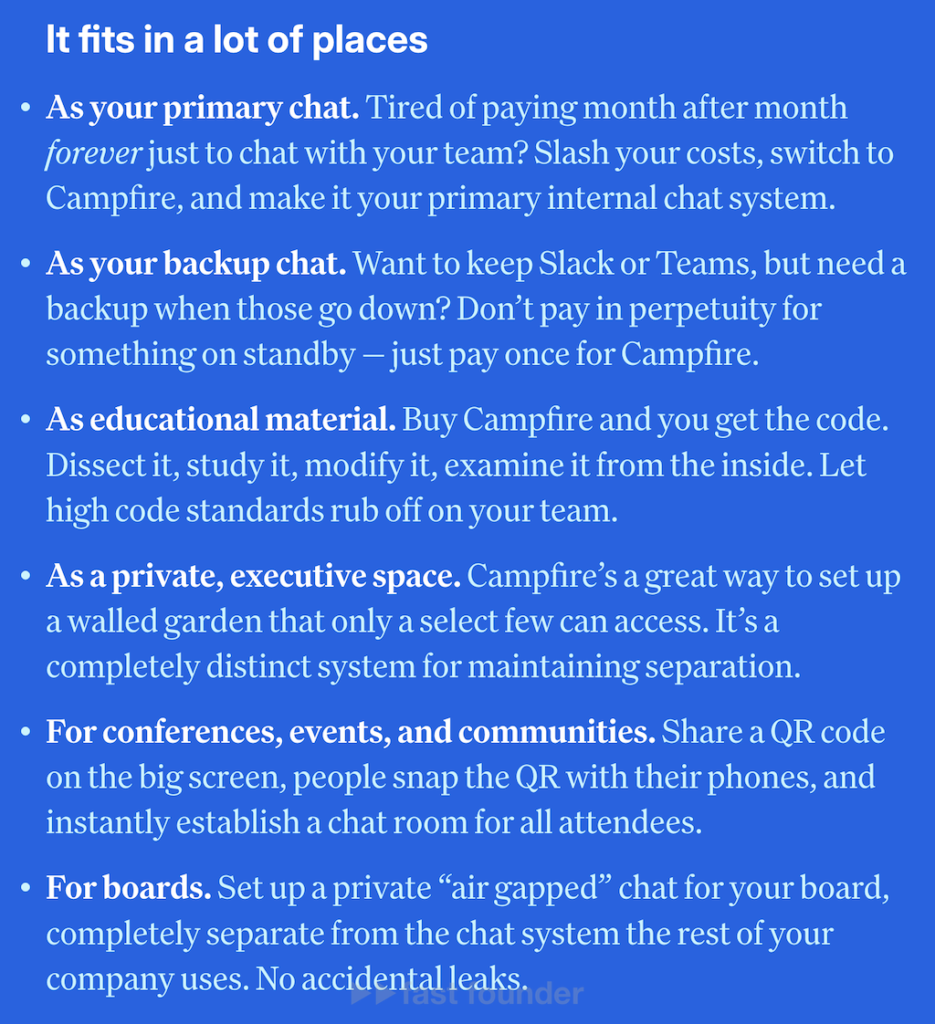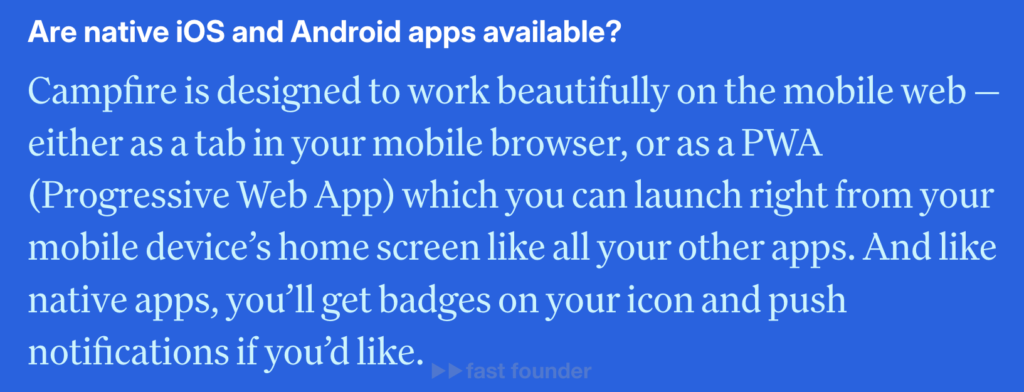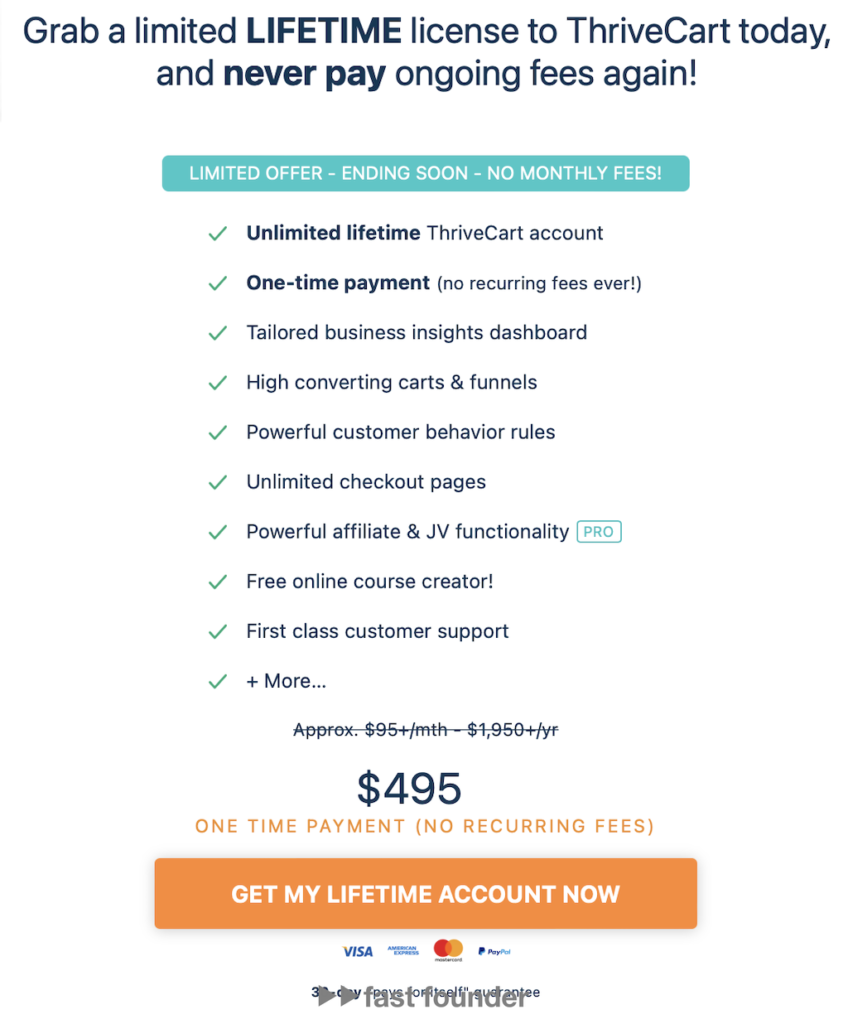- Purely theoretically, the subscription model is very profitable for developers of cloud services. After all, the user will pay you little by little — but for a lifetime. But this depends on how long that lifetime is 😉
- It turns out that often it’s more profitable to take a one-time fee, and not such a big one — and not bother with a subscription. Thereby significantly increasing your monthly revenue. And gaining the opportunity to invest much more in advertising.
- At the same time, users will consider it more beneficial for them 😉 And therefore, they will be more willing to buy your service. And here’s a simple explanation of why this happens:
Project Essence

ONCE is not a startup but a new project from the company 37signals, which released one of the first SaaS (Software as a Service) platforms for project management, Basecamp. As they write: “In the early 2000s, we were among those who led the SaaS revolution. And now, 20 years later, we want to show how to get rid of the results of this revolution” 😉
Next is the presentation of the ONCE manifesto in the first person.

Some nonsense happened with business software. Before, you paid for it once, installed it, and used it quietly. There was a full sense that you owned it. And it was.
Now, software is not a program you buy but a service you use. You no longer own the program; you rent it. Every month you pay for the same thing you paid for last month. And if you stop paying, the lease agreement is terminated — after which the program stops working, and all your data disappears.

Although, if you add up all the money you’ve paid for the subscription — for that amount of money, you should have owned this program for a long time.

The SaaS model, where the program runs somewhere in the cloud, is convenient. But this convenience was largely due to the fact that installing and administering servers on which such programs should run was too complicated.
Now, having your own server has become much easier. And companies concerned about data security do just that. And if there are no such concerns, then a server with simple management can be rented from cloud hosting for a very reasonable price.

Therefore, we are announcing ONCE — a new line of business software from 37signals:
You pay once and get a program that you can install on your server — your own or rented on cloud hosting. To install the program, just run one command. You get the program as source code, so you can see what you’re using — without fear of spyware and with the ability to modify it if necessary.

The first product in the ONCE lineup is the corporate chat Campfire, similar in functionality and appearance to Slack or Teams.

Campfire can be used as the main platform for corporate communication — but not only. Other use cases:
Backup platform, which can be used in emergency situations if Slack or Teams experiences any malfunctions. A separate chat for certain company employees — for example, for its executives and/or board of directors. A fully isolated platform is the most effective way to ensure the security of such communications. A chat that can be activated during events — conferences, corporate parties, and meetings.

If up to 250 people will use the chat simultaneously — for Campfire installation, a server with 2 GB of RAM and 1 processor will suffice. For simultaneous communication of 5,000 people — 32 GB of RAM and a 16-core processor.
However, the cost of the license does not depend on the number of users! It only depends on what server you will need to buy or rent.

One purchased license gives the right to use the chat within one domain.

There is no separate mobile application for Campfire, but the developer claims that it is optimized for mobile web — so you can open it in a mobile browser, where it will work as a Progressive Web App.

The cost of the license includes a basic level of technical support. However, the developer says he won’t deal with complex problems caused by tricky setups or modifications to the software. However, essentially, users of SaaS have the same level of technical support 😉

Software updates are performed automatically, although you can enable manual update mode or not install updates at all. The purchased license supports free software updates within one generation — for example, from version 1.0 to 1.1. Upgrading to a new generation, such as from version 1.9 to 2.0, may cost money. However, these updates are also optional.

The license fee is $299, payable once.
What’s interesting
No, but if the program needs to be installed on your own server — then you can use open-source solutions, which are generally free by definition!
Well, not quite 😉 Because developers of open-source programs of a similar level are pushing their users as hard as possible to switch to a paid mode of its use.

For example, the “professional” level of the well-known open-source chat Mattermost, similar in functionality to Campfire, will cost $10 per user per month even in the self-hosted mode.
And for Campfire, you need to pay $299 once with no limits on the number of users. It will only depend on how much you have to pay for hosting. But this will be definitely cheaper than $10 per user — considering, for example, that for 250 users, it’s enough to have a server with 1 processor and 2 GB of RAM.

One-time payment for software still exists even for some big players — alongside the subscription model. For example, with Microsoft, you can still buy Office 2021 for $149.99, and this year they are going to release Office 2024 — also with a one-time payment, the amount of which is expected to be 10% higher than for the previous version.

A Lifetime License for Office for a private user at Microsoft costs about two annual payments under the subscription model. And in early 2023, I wrote about the ThriveCart service with tools for optimizing shopping carts for online stores. They offer a lifetime license for about six months’ payment under the subscription model — $495 one-time instead of $95 per month.
The cost of today’s Campfire lifetime license at $299 — feels like it’s at the same six-month level of cost of a similar service if it worked on a subscription model.
Taking a six-month payment where companies theoretically can pay you for life seems like a crime. However, developers are unlikely to intend to operate at a loss in this way.
This leads to sad thoughts about LTV (Lifetime Value) — that same “lifetime” revenue that subscription service developers receive even for companies, although they are considered more long-term customers, unlike individuals.

According to one source, the monthly churn rate for B2B services for small and medium-sized businesses is at the level of 2.5–5% — which is considered “good”.

According to another, many B2B SaaS developers aim to achieve a churn rate of at least 10%.
In other words, the average LTV “across the board” for most B2B SaaS in a normal scenario is based on the user’s lifetime of around 1 year.

Moreover, most users drop off in the first few months after subscribing. If we look at the typical user retention curve, we’ll see that the sharpest drop-off in users occurs within the first 5 months — roughly up to 50% of those who started paying.
Thus, by introducing a one-time payment equal to six months’ payment, the developer will, on average, lose nothing if 50% of users drop off within the first 6 out of 12 months of the service’s average lifetime. And if more than 50% drop off in the first few months — they will even win because they will immediately take payment for half a year ahead 😉
And this is without any hassle of invoicing or the fact that users ran out of money on their card, so the next payment didn’t go through. And without waiting for this money for 6 months, which gives an instant and multiple increase in monthly revenue. And with the opportunity to pay much more for advertising, as the money invested in it will pay off at the first payment.
And the user will think he’s getting a good deal — because he’s offered to pay once for what he sincerely intended to pay for his whole life 😉 Moreover, to pay more and more every month for an increasing number of employees using this service.
In reality, those companies that will survive at all, that will grow, and still want to use the same service — this is indeed a very profitable deal! But as we understand, such companies will definitely be in the minority 😉
Moreover, they will probably still periodically pay for updates to the new generation of the program. So the developer still has the opportunity to earn from their loyal users.
Where to go
Strangely enough, it turns out that the one-time payment model isn’t that bad after all! And for services with a large number of user drop-offs in the first few months — it’s actually very good 😉
Moreover, it can be introduced under the slogan of caring for the user — and gain easier promotion and competitive advantage over similar services that continue to operate on the traditional subscription model.

However, one might wonder — what will the developer live on in the future if they immediately take payment from all users upfront.
But there’s no need to fear this — because every year there are plenty of new companies from which this one-time payment can be taken. For example, in the USA alone, 5.5 million new companies are registered every year. In my opinion, this is quite enough to provide an acceptable number of new customers.
Thus, the possible direction of movement is a potential reconsideration of the business model of own services towards a one-time payment instead of a subscription.
Moreover, this can be combined with creating your own line of products for a specific target audience — which would have some other common and useful characteristic. Like in the case of The Mobile-First Company from yesterday’s review — which decided to create a line of mobile applications for small businesses.
Who among the major competitors can you compete with if you introduce a one-time payment instead of a subscription? What will you lose as a result? What can you acquire in return for this? Could this be more profitable for you than a subscription? How can you most convincingly convey the charm of this model to your potential users? How much better will they bite on such an offer than on a subscription?
About the Company
Once
Website: once.com
Last Round: undisclosed
Total Investments: undisclosed
